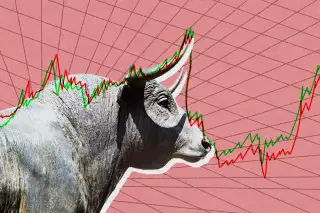Is a Bull Market Coming for Stocks? Experts Say to Watch for These 5 Signs

The last few months have been extremely challenging for investors. The S&P 500 just notched its worst September in 20 years, and the brutal month saw all three major indexes firmly in a bear market.
A perfect storm of factors — think inflation, rising interest rates, the threat of a recession and persistent geopolitical tensions — is to blame for this year’s losses. But there’s good news: Those issues won’t last forever, and neither will the bear market.
In fact, the S&P 500 jumped 2.6% on Monday — its biggest one-day gain since July. The index continued its rally during trading Tuesday, as did the Nasdaq Composite and Dow Jones Industrial Average.
While experts have been warning that more losses could be on the way, the strong start to the fourth quarter may give some investors hope that the stock market's poor performance could soon be in the rearview mirror.
5 signs of a new bull market
In a note last week, experts at wealth management firm Merrill laid out five signs they say to keep an eye on and — if and when they happen — could indicate a new bull market is on the way. Niladri Mukherjee, head of portfolio strategy for the firm's chief investment office, and investment strategist Emily Avioli say that a combination of the factors below could “lay the foundation for the next sustained equity market uptrend.”
Inflation gets closer to the Federal Reserve’s target
Right now, core inflation — a measure of consumer price growth that excludes volatile food and energy prices — is hovering above 6%. The Federal Reserve generally aims to keep core inflation around 2%. Merrill’s strategists say that a core inflation rate of around 3% and falling, which is closer to the Fed’s goal, would allow the central bank to loosen its policy and focus on encouraging growth rather than slowing an overheated economy. That could help send stocks higher because while interest rate hikes can help curb inflation, they also tend to bring down the prices of financial assets like stocks.
Jobless claims peak
The strategists suggest keeping a close eye on unemployment claims, which they expect will rise in the near-term as the economy continues to cool. Once “employers see improving prospects for top line growth and hire again” and jobless claims start falling, stocks could see a boost, they write.
Analysts get more optimistic about corporate earnings
Analysts have been increasingly bearish on corporate earnings over the past few months. An economic downturn is bad news for profits and sales, and that’s bad for stocks. When investors feel more confident about corporate profits and analysts boost their outlooks, the strategists say stocks may follow.
The dollar gets weaker
One side effect of a weakening economy has been the strengthening of the U.S. dollar relative to other major currencies. As interest rates rise, stocks fall and geopolitical tensions persist, investors are retreating to the relative safety of the dollar.
“For the dollar to turn around, we would likely need some combination of a peak Fed tightening cycle, less stress in the global financial system, some stability in leading indicators for global growth, and a potential return of investor risk appetite,” Merrill’s strategists write, adding that those factors could help stocks “find their footing.”
There’s more volatility
Volatility is never fun for investors, but Merrill’s strategists say the market is likely to get a lot more volatile before stocks start recovering. That tracks with the way stocks typically perform in October, which tends to be one of the market’s most volatile months.
When will the stock market recover?
Knowing that bear markets aren’t forever is one thing, but waiting for the market to reenter bull territory is another.
While it’s not possible to predict exactly when the stock market will recover, history shows us that the average bear market lasts about 16 months, with bear markets that occur during a recession lasting significantly longer than those that don’t.
In the meantime, there are ways investors can take advantage of the downturn. Consider using this time to rebalance your portfolio to be sure you’re appropriately diversified. You can also start dollar-cost averaging to take advantage of lower asset prices and prevent yourself from trying to time the market.
More from Money:
Will Stocks Rally to Close out 2022? Here's What History Tells Us
Wall Street Experts Warn Stocks May Fall Even Further
2 Investing Moves to Make Now That the S&P 500, Nasdaq and Dow Are All in Bear Markets